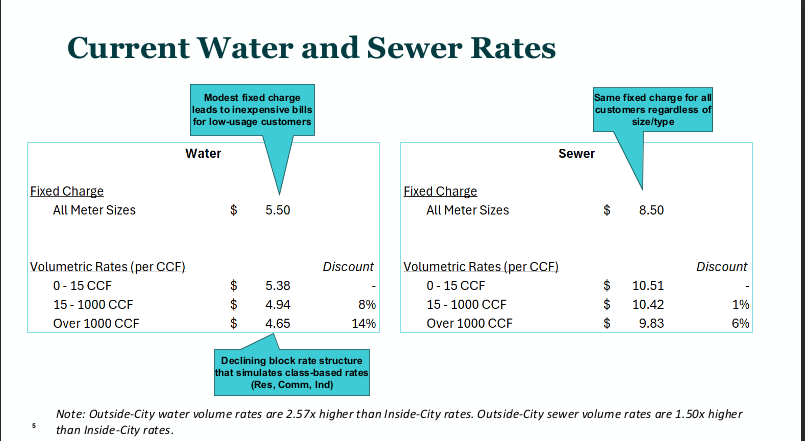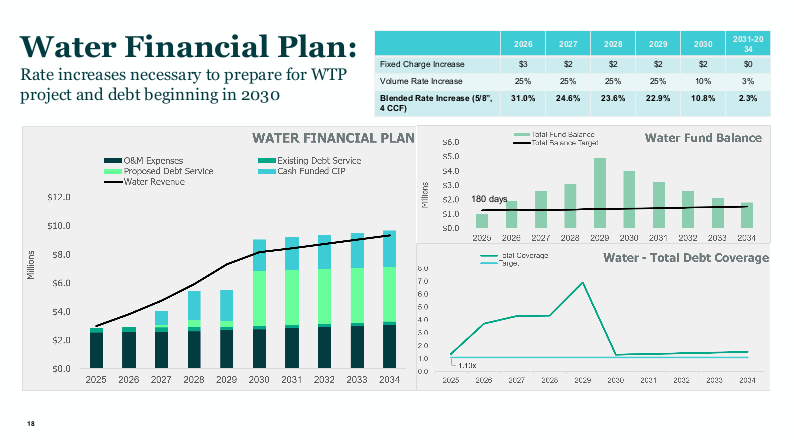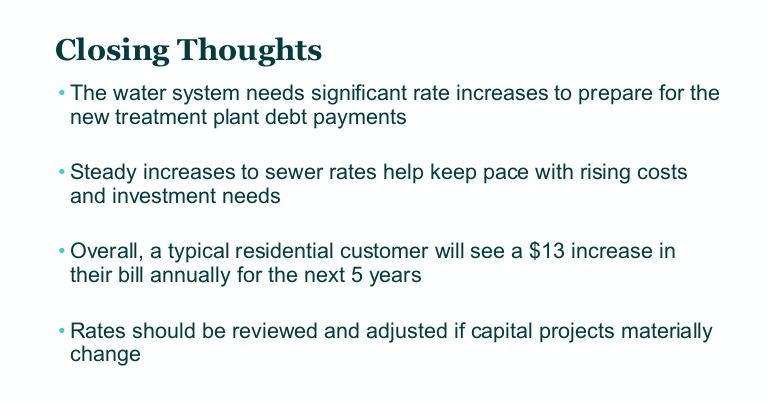
CIRCLEVILLE, Ohio – In Service committee meeting Tuesday night, Circleville Director or Public Utilites Jim Stanley, Brian Frost Director of Public Services and consultants with Strand Associates laid out a stark reality: the city’s 62-year-old water treatment plant is nearing the end of its useful life, new federal PFAS (“forever chemical”) regulations are looming, and decades of below-inflation rate increases have left the water and sewer funds unable to keep pace with needed repairs.The centerpiece of the discussion was a proposed $56 million rebuild of the water treatment plant using reverse-osmosis membrane technology — a project that consultants say will deliver dramatically softer water (reducing hardness from ~380 mg/L to 120–130 mg/L), eliminate the need for many home water softeners, and position the city to meet tightening EPA standards on PFAS, manganese, and other emerging contaminants for decades to come.Consultants from RAFTelis Financial Consultants and Strand Associates presented a five-year financial plan that calls for:

- Four consecutive 25% increases in water rates (2026–2029), followed by a 10% increase in 2030 and then 3% inflationary adjustments.
- More modest 3.5% annual increases on the sewer side.
- Simplified rate structures: elimination of declining-block tiers and a uniform volumetric rate (with a 50% surcharge for outside-city users).


For a typical residential customer using 4,000 cubic feet (approximately 3,000 gallons) per month, the combined water/sewer bill would rise from roughly $77 today to approximately $88 in 2026 and climb to about $140 by 2030 — an overall increase of more than 80% over five years.Utilities Director Brian Thompson and the consulting team emphasized that the plant, originally built in 1962 and expanded in the early 1990s, already has multiple critical processes in “imminent failure” (red) status according to a recent operations and needs analysis. Waiting for a major failure, they warned, could trigger daily EPA fines of $10,000–$15,000 and force emergency construction at far higher cost and with little or no grant eligibility.The consultants also stressed that acting now maximizes the city’s chances of securing significant grant and low-interest loan funding tied to PFAS and emerging contaminants — funding that will become far more competitive as more Ohio communities face the same mandates.Other major capital needs highlighted include:

- Ongoing $42 million wastewater treatment plant upgrade (already in construction).
- $300,000–$500,000 per year for lead service line replacements (mandated by 2037).
- Risk-based water main replacements coordinated with street paving projects.
- Elimination of remaining private septic systems inside city limits.
Council members expressed understandable sticker-shock and concern about layering major utility increases on top of the recently passed safety-forces levy. Several members worried aloud about public reaction to bills that could approach double current levels in five years. However, no council member proposed deferring the project, and consultants repeatedly cautioned that delay would only drive up costs and risk losing grant opportunities.Four related ordinances were advanced by the utilities committee:

- Two ordinances updating water and sewer connection/tap fees were sent to full council with recommendations for passage.
- The two ordinances establishing the new customer rate structures (the ones containing the large increases) were forwarded without recommendation and will receive three readings, giving the public additional time to weigh in before final votes in early 2025.
City officials pledged an aggressive public education campaign in the coming weeks to explain why the increases are necessary and to highlight the long-term benefits of softer, higher-quality water and protection against future regulatory surprises.If ultimately approved, the first rate increase would take effect in early 2025 (bills dated February or later). The new water treatment plant is scheduled for completion by 2030, with debt service on the project beginning that year.










